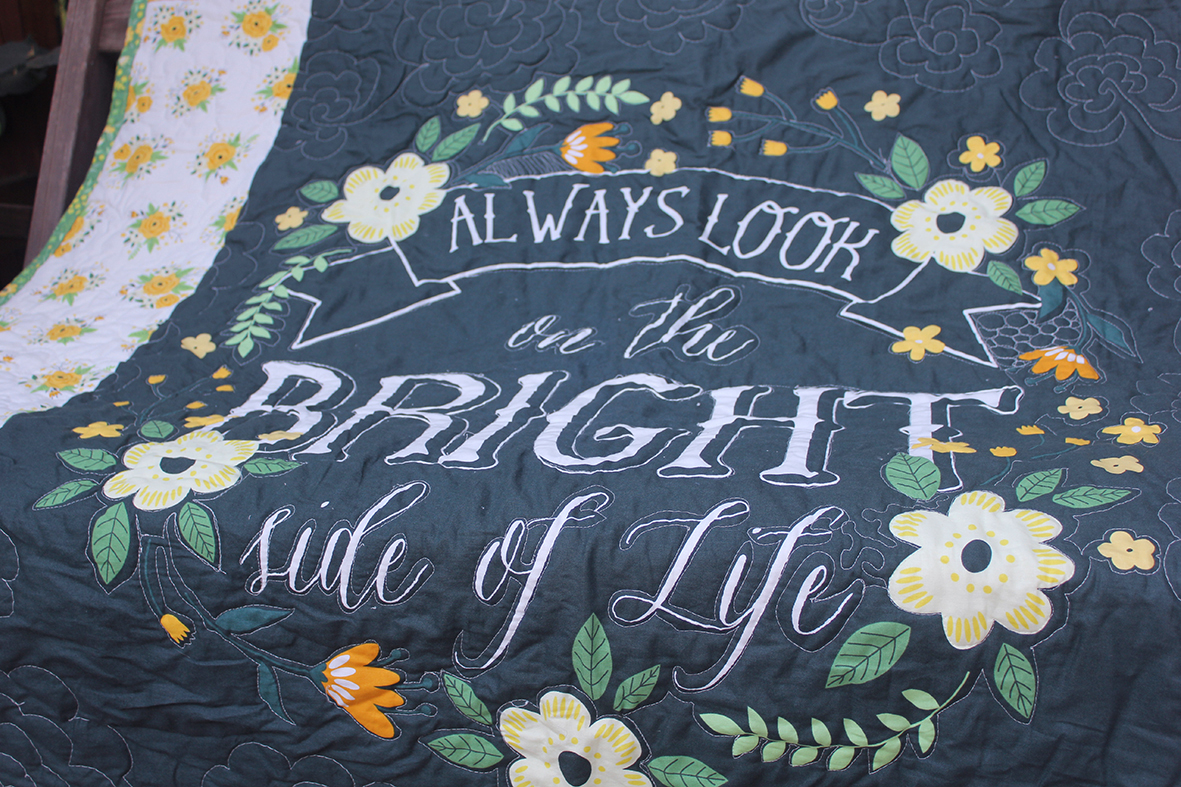
Quilting half square triangles is one of the easiest and most popular techniques. To cut them into the desired shape, you will need a quilting ruler. These rulers are marked for both the finished and unfinished sizes. Half-square triangle rulers usually have a triangle shape. To cut triangles simply turn the ruler around along the strip, and then flip it upside down. You can then sew them together using their long diagonal edges.
Trim-back method used to quilt half-square triangles
Trim-back is a great way to quilt half-square triangles. Start by placing the squares, right sides together, on the table. Next press the seams to the front. Pressing from the rear causes seams to stretch, causing tucks in seam lines. To control the tucks better, press from the front. Press all seams towards the front of your fabric.
The popular half square triangle is a versatile unit for quilting. There are many ways that quilters can make half square triangles. Here are five of them:
Fabrics for quilting halfsquare triangles
You can use half square triangles in a variety of quilt patterns. A tightly woven cotton quilting fabric is the best fabric to make half-square triangles. Look for fat quarters of fabric when you are looking to maximize the number and variety of patterns you can include in your quilt. It is best to use strong threads for quilting and to have a walking foot to avoid puckers.

Half-square triangles are easy to make, but it is important to pay attention to every detail. There are many ways to assemble blocks. However you must pay particular attention to the measurements. Understanding the differences between finished and unfinished measurements is important. The finished measurement of a block is its size after it has been quilted. While the unfinished measurement indicates the size before quilting, it is not.
Calculating triangle squares
When making half-square triangles to quilt, the first thing you need to do is decide on the size for your starting square. This will ensure that your blocks are cut exactly to size, and you avoid skewing. For the same purpose, you could also use a cheatsheet. It contains a handy formula and you can download it and pin it to your Quilting Pinterest Board.
Once you have determined the size of the squares that you'll need, you can then calculate the number of triangle units you'll need to make your quilt. To assist you in this process, you can use a calculator. Just enter the finished size of the HST in the box provided and the calculator will give you measurements for a variety of methods.
Rulers
Half square triangle rulers are a great tool for precise cutting. They are useful for making quilts of all sizes, and are easy to use. Half square triangles are made using fabric strips with 45 degree edges. Following the instructions will allow you to easily cut half-square triangular shapes without needing to measure and reposition the strips.
You can make half square triangles using many methods. Fons And Porter Notions Makes it Easier to Cut Half-Square Triangles. This quilting tool features a handy guide to cutting the perfect triangle from fabric strips, and comes with detailed instructions to help you use it successfully.

Step-by-step method for quilting half square triangles
Tricia Camp shows you step by step how to cut and sew half-square triangular units. She provides useful tips on measuring the size of the triangles as well as trimming them. Half square triangles can be cut to the same size as their sides, but it will only take 7/8. The square that is finished will be 2 inches. Then, cut it apart on the marked line.
After cutting the fabric you should align the edges with your diagonal seamline. Next, use a small length 1.5 stitch to sew together the edges. Press the fabric to ensure that the seams are aligned before you sew them together.
FAQ
What is the cost of a hobby?
It costs nothing to start a hobby. It can take many years to accomplish what you desire if you are serious about it.
One thing can help you. It's called passion'. Passion will help you put in the effort to succeed.
After you've put in hours, you might become addicted. This is where the real joy begins. You are now doing something that you love and getting better every day. This will mean that you will have likely made significant improvements by the end.
Do not worry about the time it takes. Give it a shot. You might be surprised at the results!
What are competitive hobbies, you ask?
You can compete in running, swimming or cycling as well golfing or tennis.
They're often enjoyed by people who are active and want to socialize.
If you have a hobby that involves physical activity, then you'll probably find that there are other people around who share this interest.
You might consider joining a group or club that meets regularly to play together in sports.
You could also opt to take part in team games that involve playing alongside others.
These include cricket, football, netball, hockey, netball, soccer, rugby, cricket, rugby, batsball, hockey, volleyball, badminton squash, handball and table tennis.
There are many types competition.
Some competitions can be used for only recreational purposes.
Others are designed for competitors to prove their skill.
Yet, there are others that reward exceptional performance.
In these cases, winners receive prizes.
Other competitions are meant to test competitors' strength and stamina.
These are known endurance events.
For example, marathon races, triathlons, Ironman Triathlon, etc.
These events are often contested by athletes who train hard.
They will be required to follow a rigorous training program in order to prepare mentally and physically.
They may also need to spend some time away from home during preparation.
It is important that you remember that not every athlete can compete in every type or event.
What are observation hobbies?
Observation hobbies allow you to observe others doing the same thing. You might be interested in watching sports, reading, going on holidays, and so forth. It could also be observing other people as well.
Because they teach you how to think creatively, observation hobbies are great. This knowledge will be useful later in your work for others and yourself.
It will be easier to learn about something if you are interested in it.
For instance, if football is something you are interested to know about, you can watch the game or read a book. Exhibitions are a great way to learn about photography.
If you love to play music, there are two options: either buy a new guitar online or follow along with the songs.
If you like cooking, you could cook your own meals or visit restaurants.
If you like gardening, you could grow vegetables or flowers.
If you like dancing, you could join a dance class or go out with friends.
If you like painting, you could paint pictures.
You could also write poems or stories if you enjoy writing.
You could also draw pictures if you enjoy drawing.
If you have a passion for animals, you might be able to look after them or work in a zoo.
If science interests you, you can study biology, chemistry or physics.
You can read books, listen to podcasts, or watch films if history interests you.
If you like traveling, you could travel abroad or explore your local area.
How do I start my new hobby?
It is important to choose the type of hobby you want to start.
Once you've chosen your subject, you need to be passionate about it.
Understanding why you are interested in a hobby is important. This will help you find direction and a purpose.
Once you've chosen the hobby you would like to pursue you can start planning.
Take a look at the equipment you will need.
Consider whether you are required to attend classes and seminars.
You must ensure you have enough room for your hobby.
You may also consider joining a club or group. These groups often offer advice and support.
Finally, think about how much money you would need to spend on your hobby.
Is it possible for a hobby to make you rich?
Not necessarily.
However, if you're interested in creating a business based on your hobby, then you could definitely end up being wealthy.
For example, let's say you're a fan of cooking. You enjoy healthy food so you opened a restaurant.
You only prepare organic meals from scratch. To cover the labor and ingredients costs, you will charge your customers a small service fee.
You grow your clientele and eventually you hire employees who can work with you.
Soon, your menu will include gluten-free and vegan options as well as desserts.
In this situation, you have a successful business which has allowed you the freedom to lead the lifestyle that you want.
But, it doesn't mean your day job must be abandoned.
You could instead run your own restaurant and still hold your 9-5 job.
What are some free resources I can use to learn more about hobbies
There are many websites that help people find new hobbies.
Here are some favorites of ours:
www.trythisathome.com - This site provides a list of over 100 different hobbies. You can also find information about how to start each hobby.
www.hobbyfinders.org -- This site provides a searchable database of thousands upon thousands of hobbies that you can browse by skill level, location and interest.
www.indiebazaar.co.uk - IndieBazaar is an online marketplace designed specifically for independent artists and musicians. You will find hundreds of products that range from artwork to music gear on the site.
www.pinterest.com/explore/hobbies - Pinterest is a social media network that lets users "pin" images they find interesting onto their boards. Boards let users organize what they like into particular categories.
www.reddit.com/r/Hobbies Reddit is another social networking platform that allows users to link to articles, videos or other content. Voting allows users to vote for the most valuable posts.
Why do we need hobbies?
Hobbies play an integral part in our lives. It allows us to unwind and recharge, think creatively, exercise, socialize, have fun, and allow us to enjoy life. They also provide us with opportunities for learning new skills and developing valuable life-long interests.
Hobbies give us meaning and purpose in life.
These are a great way for you to have some free time, even if there isn't much else.
They're also fun!
If you don’t have the time to do a hobby, you likely don’t have any other hobbies.
Look at all the options. Start a hobby today, if you don’t have one already!
Statistics
- A new survey by Pew Research Center of teens ages 13 to 17 finds that 36% of girls feel tense or nervous about their day every day; 23% of boys say the same. (pewresearch.org)
- 37% Video Games 36% Travel 36% Health and Fitness (quizexpo.com)
- Studies show that just six minutes of reading can reduce stress levels by 60 percent. (oberlo.com)
- The Role of the Mind in Sex, Dating, and Love: Men in the “humor” condition received phone numbers from 42.9% of the female participants and were refused 57.1% of the time. (time.com)
- Almost 80% of people claim to have no hobby. (hobbylark.com)
External Links
How To
How to start gardening
Gardening is one of the oldest forms of agriculture. You need patience, perseverance, and determination. The first step to starting a garden is to pick a spot where you will grow food. This could be on a large piece of land or in your backyard. Next, you will need to decide which type of plants are best for you. Do you prefer vegetables or flowers? Some people enjoy growing herbs while others love raising livestock such as rabbits. Before you decide what crops to plant, you should think about how much space is available. You might consider growing berries or fruits if you live in a cold climate.
After you have decided what you want to plant, it is important that you prepare the soil. How your plants perform is dependent on how well the soil you use. Organic matter is essential for the health and well-being of your plants. Organic matter can include leaves, twigs and grass clippings as well as manure and compost. After you have prepared the soil, you will need to add nutrients. Depending on the type of plants you plan to grow, you may need different amounts of nitrogen, phosphorus, potassium, calcium, magnesium, boron, zinc, copper, manganese, iron, molybdenum, chlorine, sulfur, sodium, and so on. A fertilizer calculator online can help you determine these values. There are many fertilizers on the market, so ensure you understand what you are buying.
After preparing your soil and adding the proper nutrients, you now need to wait until your seeds germinate. This can take anywhere from two weeks to three months depending on where you live and how warm it is. After your seeds sprout, it is important to water them frequently. Too much or too little water can cause problems. Ensure you give your plants enough water at regular intervals and avoid overwatering. Overwatering could lead to root rot as well as fungal diseases. Consider that plants generally need less water in the warmer months than they do in winter. Keep in mind that certain plants may need to be dried after being watered. Tomatoes for instance need to remain slightly moist, but not wet. Soggy soil is not good for them. After plants finish flowering, they need to go dormant. The time when plants stop producing new life and store energy for the next season is called dormancy. The plant ceases sending signals to its roots to produce food during dormancy. During this period, plants continue to store energy. The plant will eventually die if it is not given enough sunlight or temperatures below freezing.
Urban areas can limit your choices for plants. Concrete sidewalks, roads, buildings and parking lots are all common in urban areas. These blocks block sunlight from reaching ground level. Concrete absorbs light and prevents soil below from getting sufficient sun exposure. Because of this lack of sunlight, many plants cannot survive in cities. However, many plants can still thrive in urban environments. Many trees, shrubs and perennials can thrive in urban environments. Many annuals can also be grown indoors in container gardens. Container gardens can be used to grow greenery indoors year-round, no matter what the weather outside.
You are now ready for planting!